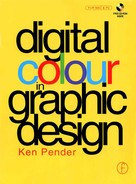Summary
A few readers may be old enough to remember sitting in the darkness of a cinema auditorium watching the original screening of the Wizard of Oz in which Dorothy, the young heroine played by Judy Garland, is knocked unconscious as the family house is struck by a tornado. The opening sequences leading up to this event were filmed in black and white and then, as Dorothy, still unconscious, begins to dream, suddenly the images on the screen transform into dazzling Technicolor. For me, as a child, this film encapsulated the magical quality of colour, as Dorothy set off, not along a pale grey brick road, but along a bright yellow brick road, in search of the magical land of Oz.
For most of us, who just take colour for granted, it is hard to imagine how life would be in dull monotone. Life without the vibrancy which colour brings to a sunset, a rainbow, the petals of a flower or the plumage of a bird. Thanks to science, we have some understanding of the physical relationships between light and colour, but even today we do not fully understand how the brain perceives colour. We do know, however, from research that colour is an catalyst in the process of communication between people, for example that the visual impact and retention rate of information communicated with the aid of colours is much higher than that communicated in black and white.
In our world with its population approaching six billion people, sharing hundreds of languages and thousands of dialects, the importance of using graphics wherever possible to surmount language barriers is self–evident and colour offers a whole new dimension to the graphic designer and artist in this task.
Over the centuries, artists have sought to reproduce the colours in nature’s palette – the blues, greens and browns of a landscape, the delicate skin tones of a living subject – using paints made from nature’s materials. As we have seen, such paints rely for their effect on the absorption and reflection of light, so in a sense, today’s digital artist is simply using a variation of this technique by using an electron beam to emit light from the phosphor screen of a monitor. What has changed is that the digital artist possesses a level of precise control over the colour of that light that his predecessors could not have imagined.
The technology of satellite communications is already bringing colour television pictures into billions of homes around the globe and the same technology will provide the same homes with access to the Internet. Instead of art galleries displaying coveted works of art for the pleasure of the elite few, free access to virtual art galleries will become available to millions, motivating many of them to participate in the revolution, contributing their own creations via their own Web sites.
In this book we have looked briefly at the way digital colour works and at exciting new ways in which it can be applied to the creation of a wide variety of illustration types. As the digital revolution continues its dizzy pace, the opportunities unfolding before the designer are enormous. The future’s bright! Thedigital future is coloured!
